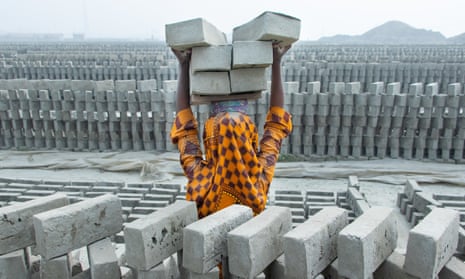Fifty million people around the world are trapped in modern slavery, either forced to work against their will or forced into a marriage, according to new global estimates, marking a significant rise over the past five years.
The number of people trapped in forced labour, including sex trafficking, rose to 28 million, with a further 22 million trapped in forced marriage, says a report published on Monday by the International Labour Organization, International Organization for Migration (IOM) and the anti-trafficking human rights group Walk Free.
The new estimates found that 10 million more people had fallen victim to forms of modern slavery in 2021 compared with 2016, with women and children the most badly affected.
Most cases of forced labour – 86% – were found in the private sector in industries including manufacturing, construction, agriculture and domestic work. Millions of people, mainly women and girls, are also estimated to be trapped in commercial sexual exploitation. The other 14% of cases are state-sanctioned forced labour.
The report found that the main form of coercion used by employers was the deliberate withholding of wages and the threat of dismissal, and that the refugee crisis has fuelled a surge of exploitation in supply chains and commercial businesses and industries.
More than 6 million more women and girls have also been forced into marriage, particularly child marriage affecting girls of 16 and under. The overwhelming majority of forced marriages (more than 85%) were driven by family pressure, with most cases occurring in Asia and the Pacific and across the Arab states.
The new estimates also show that slavery is occurring at scale across the world, with more than half (52%) of all forced labour and a quarter of forced marriages occurring in high-income or middle-income countries.
“It is shocking that the situation of modern slavery is not improving. Nothing can justify the persistence of this fundamental abuse of human rights,” said the ILO’s director general, Guy Ryder.
“We know what needs to be done, and we know it can be done … but governments cannot do this alone,” he said. “Trade unions, employers’ organisations, civil society and ordinary people all have critical roles to play.”
The ILO, IOM and Walk Free set out a number of recommended actions to reduce the prevalence of modern slavery, including improving labour laws and inspections, ending state-imposed forced labour, stronger measured to stop trafficking and slavery in supply chains, and raising the legal age of marriage to 18 without exception.
